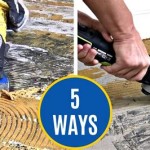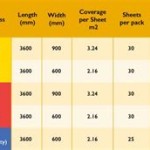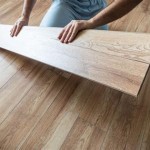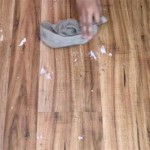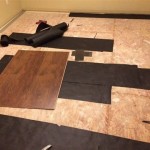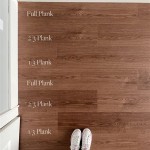How To Remove Carpet Tape Adhesive From Wood Floor
The presence of carpet tape adhesive on a wood floor represents a common household challenge. Its tenacious grip, designed to secure carpets, can leave behind a sticky, unsightly residue when the carpet is removed. Addressing this issue requires a strategic approach, taking into account the type of wood floor, the severity of the adhesive residue, and the potential impact on the finish. This article outlines effective methods and precautions for removing carpet tape adhesive from wood floors.
The composition of carpet tape adhesive often includes synthetic rubbers and resins, formulated to provide strong adhesion to both the carpet backing and the floor surface. Over time, this adhesive can cure and harden, making its removal more difficult. Factors such as temperature, humidity, and the duration of time the tape was adhered to the floor can also influence the stubbornness of the residue. A thorough understanding of these factors is crucial for choosing the most appropriate removal technique.
Before commencing any removal process, it is essential to identify the type of finish on the wood floor. Common wood floor finishes include polyurethane, varnish, lacquer, and wax. Each finish reacts differently to various cleaning agents and solvents. Applying an inappropriate solution can damage the finish, resulting in discoloration, dullness, or even complete removal of the protective layer. A test in an inconspicuous area is always recommended to assess the compatibility of the chosen method with the specific floor finish.
Assess the Adhesive and Floor Type
The first step in tackling carpet tape adhesive removal is a careful assessment of the situation. This involves examining the type and amount of adhesive residue present, as well as identifying the type of wood and its finish. Newer adhesive residues might be softer and easier to remove, while older residues may be considerably more challenging. Consider the flooring material itself. Is it solid hardwood, engineered hardwood, or laminate flooring? Each material requires a slightly different approach to avoid damage.
For instance, solid hardwood floors are generally more resilient and can withstand more aggressive cleaning methods, whereas laminate floors are more susceptible to damage from harsh chemicals and excessive moisture. Engineered hardwood occupies a middle ground, requiring a balance between effective cleaning and gentle handling. Take note of any existing damage to the floor, such as scratches or gouges, as these areas may be more vulnerable to further harm during the cleaning process. A detailed assessment allows for a tailored approach, minimizing the risk of unwanted side effects.
After assessing the adhesive and the floor, a visual inspection can help determine the extent of the issue. Is the adhesive residue localized to a few small spots, or does it cover a large area of the floor? Understanding the scope of the problem helps to plan the removal process more effectively. Photographing the affected area before starting can provide a useful reference point for tracking progress and identifying potential problem areas.
The identification of the finish is paramount. Older floors may have been treated with shellac or varnish, while newer floors are more likely to have a polyurethane finish. Shellac and varnish are more sensitive to solvents and water damage than polyurethane. A simple test can help identify the finish: rub a small amount of denatured alcohol on an inconspicuous area of the floor. If the finish becomes sticky or dissolves, it is likely shellac or varnish. If the finish remains unaffected, it is likely polyurethane.
Effective Removal Methods
Several methods can be employed to remove carpet tape adhesive from wood floors. The choice of method depends on the severity of the adhesive residue, the type of floor finish, and the availability of tools and materials. Starting with the least aggressive method and gradually increasing the intensity is recommended to minimize the risk of damage.
One of the initial approaches involves using heat to soften the adhesive. A hairdryer or heat gun (used on a low setting) can be directed at the adhesive residue to soften it. Once the adhesive is pliable, a plastic scraper can be used to gently lift it from the floor. Avoid using metal scrapers, as they can easily scratch the wood. A putty knife with rounded corners can be a safer alternative. Apply gentle, even pressure while scraping, and avoid forcing the scraper, which could damage the floor finish. After scraping, a clean, damp cloth can be used to wipe away any remaining residue.
Another common method involves using household solvents to dissolve the adhesive. Mineral spirits, also known as paint thinner, is a relatively mild solvent that can effectively break down many types of adhesive. Apply a small amount of mineral spirits to a clean cloth and gently rub the adhesive residue. Allow the solvent to sit for a few minutes to penetrate the adhesive, then use a plastic scraper to remove the softened residue. Always work in a well-ventilated area when using solvents, and wear gloves to protect the skin. After removing the adhesive, clean the area with a damp cloth and a mild detergent to remove any remaining solvent.
For more stubborn adhesive residues, stronger solvents such as acetone or nail polish remover may be necessary. However, these solvents are more likely to damage the floor finish, so they should be used with extreme caution. Always test the solvent in an inconspicuous area before applying it to the entire affected area. Apply a small amount of solvent to a clean cloth and gently rub the adhesive residue. Allow the solvent to sit for a very short time (a few seconds) before wiping it away. If the finish begins to soften or dissolve, discontinue use immediately. If the finish remains unaffected, proceed with caution, using minimal solvent and wiping it away promptly. After removing the adhesive, clean the area thoroughly with a damp cloth and a mild detergent.
Another alternative involves using commercially available adhesive removers specifically designed for removing sticky residues. These products often contain a blend of solvents and surfactants that are effective at breaking down adhesive without damaging the floor finish. Always follow the manufacturer's instructions carefully when using these products. Test the product in an inconspicuous area before applying it to the entire affected area. Apply the product to a clean cloth and gently rub the adhesive residue. Allow the product to sit for the recommended amount of time, then use a plastic scraper to remove the softened residue. After removing the adhesive, clean the area with a damp cloth and a mild detergent.
For particularly stubborn adhesive residues, a combination of methods may be required. For example, heat can be used to soften the adhesive, followed by the application of a solvent to dissolve it. The key is to proceed gradually and carefully, testing each method in an inconspicuous area before applying it to the entire affected area. Patience and persistence are often necessary to achieve satisfactory results.
Preventative Measures and Post-Removal Care
Preventing adhesive residue build-up and providing proper post-removal care are crucial for maintaining the appearance and integrity of the wood floor. Careful consideration should be given to the type of adhesive used in the first place, alongside appropriate cleaning and maintenance routines.
One preventative measure is to use carpet tape sparingly and strategically. Avoid applying tape to areas that are likely to experience high foot traffic or exposure to moisture, as these conditions can accelerate the curing and hardening of the adhesive. Consider using alternative methods for securing carpets, such as area rugs with non-slip backings or rug pads that provide cushioning and grip without the need for adhesive. When carpet tape is necessary, choose a low-residue tape that is specifically designed for use on wood floors. These tapes typically use weaker adhesives that are less likely to leave behind a sticky residue.
Regular cleaning and maintenance can also help prevent adhesive residue build-up. Dust and debris can accumulate around the edges of carpets, trapping adhesive and making it more difficult to remove. Vacuuming the floor regularly can help prevent this accumulation. Use a vacuum cleaner with a soft brush attachment to avoid scratching the floor finish. Wipe up spills and messes promptly to prevent them from seeping under the carpet and contributing to adhesive residue build-up.
After removing carpet tape adhesive from a wood floor, it is important to restore the finish and protect the wood. Clean the area thoroughly with a damp cloth and a mild detergent to remove any remaining residue and cleaning agents. Allow the floor to dry completely before applying a wood floor cleaner or polish. Choose a cleaner or polish that is specifically designed for the type of finish on the floor. Apply the product according to the manufacturer's instructions. In some cases, it may be necessary to reapply the finish to the affected area to restore its original appearance. This is particularly true if the adhesive removal process has damaged the finish. Spot-treating the damaged area with a matching finish can blend it seamlessly with the surrounding floor.
For minor scratches or scuffs, a wood floor touch-up marker or crayon can be used to conceal the damage. Choose a marker or crayon that matches the color of the floor. Apply the product to the scratch or scuff, following the manufacturer's instructions. Wipe away any excess product with a clean cloth. For more significant damage, it may be necessary to sand and refinish the affected area. This is a more involved process that requires specialized tools and skills. If you are not comfortable sanding and refinishing the floor yourself, it is best to hire a professional flooring contractor.
Maintaining a consistent cleaning schedule and promptly addressing spills will prevent future adhesive problems and ensure the longevity and beauty of the wood floor. By implementing these preventative measures and post-removal care routines, one can successfully manage carpet tape adhesive removal and keep the wood floor looking its best.

Easy Ways To Get Rid Of Carpet Tape On Wooden Floors Or Stairs Floor Sanding

How To Remove Double Sided Carpet Tape From A Wood Floor

Removing Carpet Tape From Hardwood Floors Or Stairs

Flooring How Can I Remove Carpet Adhesive From Hardwood Floors Home Improvement Stack Exchange

Best Cleaner Ever To Remove Sticky Tape From Floors Etc Safe Easy

Removing Carpet Tape From Hardwood Floors Or Stairs

4 Ways To Remove Adhesive From A Hardwood Floor Wikihow

Easy Way To Remove Tape Residue Goo Gone

How To Remove Carpet Tape From A Wood Floor Without Damage

Best Cleaner Ever To Remove Sticky Tape From Floors Etc Safe Easy
See Also
